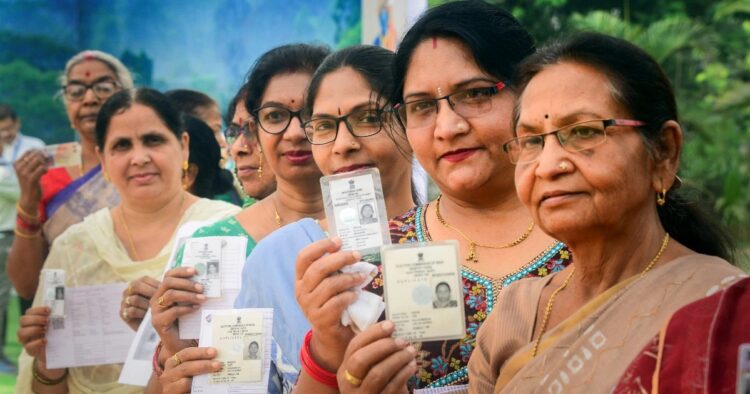As the third phase of voting for the 2024 Lok Sabha elections unfolded across states and Union Territories, citizens turned out in significant numbers to exercise their democratic rights.
With 93 constituencies up for grabs and over 1,300 candidates in the fray, including 120 women, this phase holds immense importance in shaping the nation’s political landscape.
In Maharashtra, key political figures like Deputy Chief Minister Ajit Pawar and NCP leader Sharad Pawar, along with their family members, participated in the voting process. However, the state witnessed the lowest voter turnout at 53.40%, contrasting with Assam’s impressive 74.86% turnout, the highest among the states by 5 PM.
In Assam, people came out in large numbers to vote, with an impressive turnout of 74.86%. Meanwhile, Bihar saw a turnout of 56.01%, Chhattisgarh had 66.87%, and Dadar and Nagar Haveli along with Daman and Diu saw 65.23% of voters showing up.
Goa also had a good turnout, with 72.52% of voters casting their ballots. Gujarat recorded a turnout of 55.22%, Karnataka had 66.05%, and Madhya Pradesh saw 62.28% of eligible voters exercising their right to vote.
In Uttar Pradesh, 55.13% of voters participated in the electoral process. West Bengal had a significant turnout of 73.93%, showing a strong participation from the voters in the state.
ASSAM-74.86%
BIHAR-56.01%
CHHATTISGARH-66.87%
DADAR AND NAGAR HAVELI, DAMAN AND DIU-65.23%
GOA-72.52%
GUJARAT-55.22%
KARNATAKA-66.05%
MADHYA PRADESH-62.28%
MAHARASHTRA-53.40%
UTTAR PRADESH-55.13%
WEST BENGAL-73.93%
Prime Minister Narendra Modi and Union Home Minister Amit Shah set an example by casting their votes early in Ahmedabad, Gujarat. Amidst reports of sporadic violence in West Bengal, polling remained largely peaceful in the other states.
PM Modi, after casting his vote, interacted with voters outside the polling station and shared a light-hearted moment with a child. He also advised people to stay hydrated amidst the ongoing heatwave.
Despite efforts to maintain order, clashes were reported in West Bengal’s Jangipur, where a heated altercation between a BJP candidate and a Trinamool Congress worker escalated. Similarly, in Uttar Malda, unidentified individuals resorted to violence by throwing a crude bomb at a polling station.
Moreover, concerns were raised about electoral malpractices. The NCP lodged a complaint with the Election Commission regarding the use of passbooks from certain cooperative banks for voter identification, alleging the possibility of issuing fake documents.
In Gujarat, the Congress alleged unfair practices, claiming that pens bearing the BJP’s election symbol were being used at a polling booth in Gandhinagar. According to Gujarat Congress chief Shaktisinh Gohil, such tactics reflect the BJP’s fear of losing the polls.
Despite these challenges, voter turnout until 5 PM stood at a commendable 60.19% across the 12 states and Union Territories where polling was ongoing. As citizens exercise their democratic right, the nation eagerly awaits the results that will shape its political trajectory for the coming years.
The previous Lok Sabha elections in 2019 saw the BJP emerging as the dominant force in Phase 3, securing 72 out of 94 seats. However, with the political landscape evolving, the outcome of the current phase remains uncertain, adding to the anticipation surrounding the final results.

















Comments